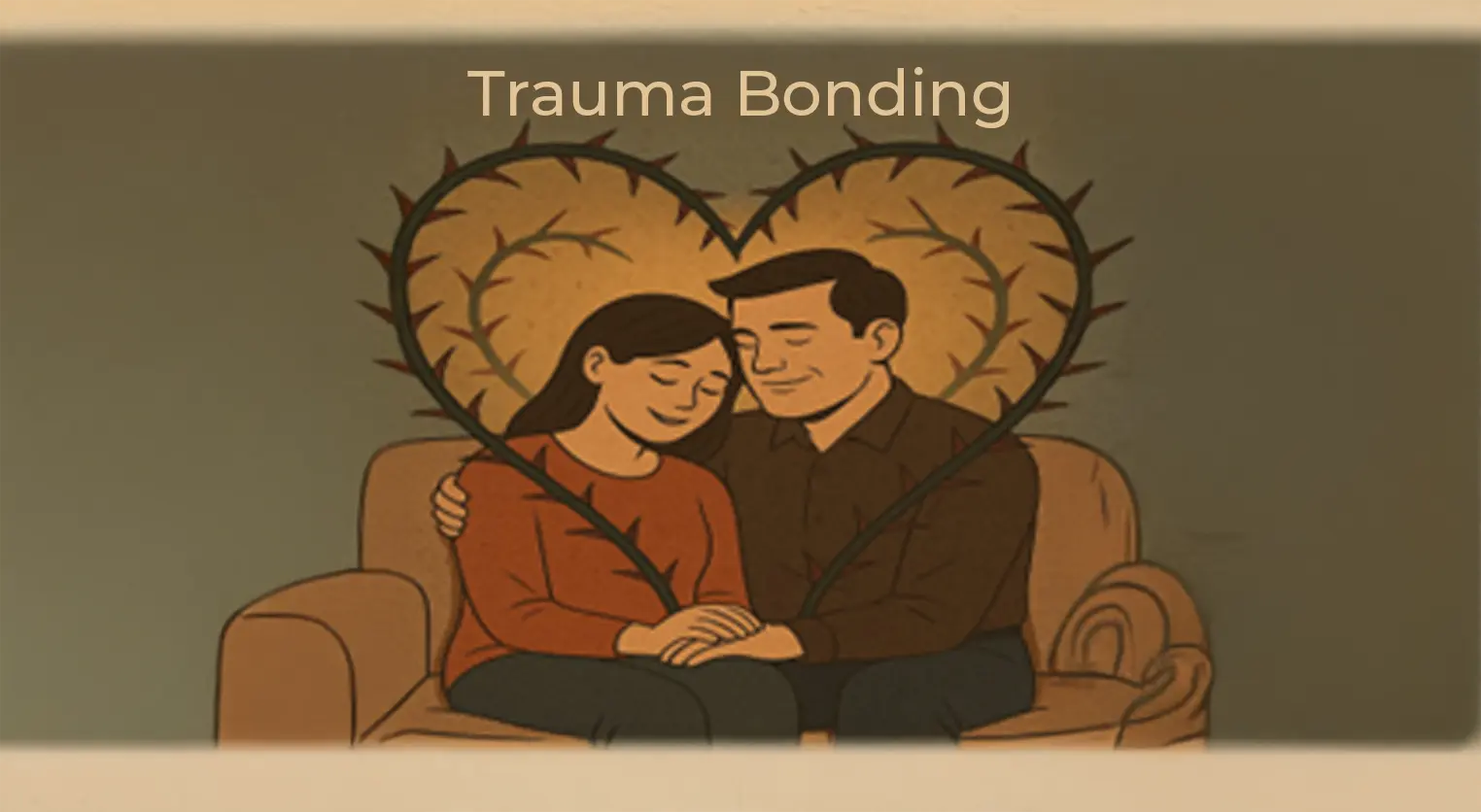Trauma Bonding: When Pain Feels Like Love; The Devil’s Snare
Have you ever stayed in a relationship that brought you pain, yet felt unable to leave because of the rare, intoxicating highs? That’s not love- that’s trauma bonding.
What is Trauma Bonding?
Trauma bonding happens when intense emotional experiences especially cycles of pain, guilt, and intermittent affection create deep attachment to the person causing harm. It’s a survival response, not a conscious choice. And it’s more common than we admit, especially in Indian families and romantic relationships where control often wears the mask of care.
The Science Behind It
- A 2023 meta-analysis in Clinical Psychology Review shows trauma bonding shares neurobiological traits with addiction dopamine spikes during moments of relief make victims crave emotional crumbs from the abuser.
- A 2022 study from The Indian Journal of Psychiatry found high levels of cognitive dissonance and emotional dependency in Indian women in long-term toxic marriages, often rationalised as duty or cultural expectations.
- A 2024 cross-sectional study in Child Abuse & Neglect revealed how children raised in authoritarian homes mistake fear for respect and control for safety laying a foundation for trauma bonding in adult relationships.
A Client Once Said
“I thought I was being loyal. I kept convincing myself that if I loved him enough, he would change. But every ‘I’m sorry’ was nothing but a repeat cycle.”
Spotting the Snare
- Do you feel high levels of guilt for thinking about leaving?
- Do you justify or hide their behavior from others?
- Do they alternate between being extremely loving and cold or hurtful?
- Do you feel addicted to the good moments despite the bad ones outweighing them?
Breaking the Bond – 5 Action Steps
- Name it to Tame it: Accept it’s not just a “bad phase.” Labeling trauma bonding is the first step toward healing.
- Create Distance: Physically or emotionally. Even reducing daily contact helps your nervous system unlearn the pattern.
- Build Emotional Anchors: Journal, talk to a friend, or engage in grounding activities that remind you of who you are outside the bond.
- Learn Healthy Love Models: Read, listen to podcasts, or join support groups to rewire what love should feel like: calm, not chaotic.
- Seek Professional Help: Trauma bonding is hard to untangle alone. Therapy offers clarity, validation, and tools for recovery.
Closing Thought
Trauma bonding thrives in silence, shame, and isolation. Naming it breaks that power. You’re not weak you were wired for survival. But healing begins when you decide to break the cycle.
Need help untangling trauma bonds?
Reach out to Dee-Cognito

